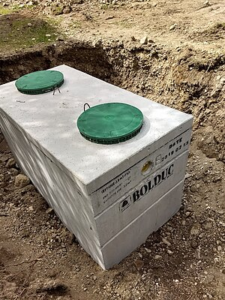The plumbing industry requires compliance with regulations and the highest level of professionalism and customer service. This often requires hiring more staff and upgrading equipment, as well as workforce management tools that streamline scheduling.

If you’re a licensed plumber with field experience, building your own business may be an attractive option. But buying a plumbing company compresses your timeline to profitability and unlocks operational scale much faster. Contact Plumbing Companies Texas for professional help.
Plumbing companies install and repair water supply systems, drainage systems, sewer lines, and other essential components for residential, commercial, and industrial properties. Their services ensure that water flows smoothly and efficiently, while waste is properly disposed of. Plumbing issues, like leaks or clogs, can quickly become disasters if not dealt with immediately. Reliable plumbing companies can help prevent and correct these problems before they cause serious damage or health risks.
A successful plumbing business depends on highly skilled, reliable employees. It also needs to adhere to licensing and permit requirements in order to operate legally. It’s important to select the right legal structure for your business, such as a sole proprietorship, partnership, limited liability company (LLC), or corporation. Each has different tax and liability implications. A qualified attorney or accountant can assist you in determining the best structure for your business.
As a plumbing business grows, it becomes necessary to invest in additional equipment and tools. This can include video cameras to inspect pipes, high-pressure water jetters to clear clogged drains, and specialized pumps for flood restoration. Some plumbing businesses also use centralized scheduling software to manage bookings, shift assignments, and employee requests. This can save time and improve efficiency.
The plumbing industry is competitive, with numerous established businesses and individual plumbers vying for clients’ business. Setting your plumbing business apart from the competition requires strategic marketing, exceptional customer service, and a solid reputation. It’s also crucial to have sufficient insurance coverage for potential accidents and property damage.
Regular maintenance and timely repairs by a dependable plumbing service can protect the value of your commercial or residential property. Proper plumbing care can prevent costly damages, repairs, and future replacements, while ensuring that your systems function effectively for years to come. A reputable plumbing company will provide transparent pricing and be available to answer any questions or concerns you may have. This helps to build trust and encourages repeat business.
Expertise
Most people who start businesses take the time to do their homework, creating a business plan that outlines how their company will operate, what services they’ll offer and who their target customers are. Plumbing companies are no different, as they need to create a business plan that defines what sets them apart from the competition. This includes describing the types of services they provide and highlighting any unique methods or tools they use to make their services more effective.
Once a plumbing company has a solid foundation in place, it’s important to focus on growth. This involves acquiring more customers and growing revenue, which can increase profit margins and allow the company to invest in new equipment or additional service vehicles. It also requires finding exceptional employees who are dedicated to the company and can handle the increased workload.
Whether you’re looking to grow your plumbing business or expand into other markets, it’s essential to stay up-to-date on industry standards and regulations. This includes ensuring that all employees have the necessary credentials and training to perform their jobs safely. It’s also a good idea to participate in networking events and professional organizations to connect with potential customers and other industry professionals.
When it comes to hiring, it’s important to focus on skill and work ethic more than experience alone. Interview candidates carefully to determine their problem-solving abilities and customer service mindset. Avoid asking questions about age, religion or marital status, and instead focus on the candidate’s attitude and willingness to learn. A hands-on skills test is another great way to assess a candidate’s ability.
It’s also important to set pricing that is competitive and transparent. Many plumbing businesses overcharge for their services, which can turn off customers. Be sure to factor in labor, materials and overhead expenses when calculating quotes and include a reasonable margin for profit. Additionally, many customers appreciate upfront estimates that break down each cost, making it easier to understand and approve the price of a project. This also helps to build trust and encourage repeat business.
Equipment
In the plumbing industry, equipment is essential. The right tools and training will enable you to handle emergency repairs or new installations, as well as help with diagnostics. Whether you need a basic plumbing toolkit or specialized equipment for septic systems and water heaters, there are several options available. Some of the most common equipment includes:
For more information about choosing the right plumbing tools and supplies, visit the website of your local supplier. They will have the latest in technology and products. Also, they can help you identify the best options for your specific needs and budget.
To start a plumbing company, you’ll need to determine your target market and what services you want to offer. Then, you’ll need to analyze your competitors to understand what sets them apart from your business. Homeowners may need emergency repair services or help with clogged drains, while businesses often require maintenance agreements or specialized installations.
You’ll need to choose a location for your business and invest in the necessary infrastructure. You’ll also need to purchase plumbing equipment, including pipes, faucets, fixtures, and fittings. You can find the best plumbing tools and equipment for your business by analyzing the needs of your customers and researching what’s on the market.
Depending on your specialty, you might need specialized equipment like a gas line tester or a pipe cutter. You’ll also need a hand auger, which can be used to clear smaller clogs in sewer lines. Depending on your business, you’ll need to invest in safety tools like masks, goggles, and gloves. Lastly, you’ll need plumbing management software to track your costs and improve efficiency.
A plumbing business requires a certain level of investment, but it’s possible to launch a profitable operation with a minimal initial cost. You can start by leveraging existing funding sources, such as small business loans or investors. You can also opt to use your personal savings or take out a line of credit. Then, make sure to hire the right people to help you run your business and keep customers happy.
Insurance
When you run a plumbing company, the right insurance policies can protect your livelihood, tools, and employees. There are several types of business insurance for plumbers that can cover everything from property damage to workers’ compensation claims. Whether you’re a solo plumber or manage a crew of ten, the right plumbing business insurance can help you weather any storm.
One of the most important plumbing insurance policies is general liability insurance, which can protect your business from lawsuits that stem from accidents on the job. Plumbing businesses work with heavy equipment and chemicals, which puts them at risk of causing bodily injuries or damage to customer properties. General liability insurance can pay for cleanup costs, medical expenses, and other legal fees if such an incident occurs.
Another necessary plumbing business insurance policy is commercial auto insurance. This coverage covers the cost of repairing or replacing your company vehicles that are damaged on the road, including those driven by employees. You can get this insurance as a standalone policy or as part of a larger business insurance package.
Plumbing companies often need to travel to customer sites. This requires a reliable fleet of cars and trucks. In addition to car insurance, you’ll also need commercial truck insurance that covers the vehicles and drivers that your business uses to transport equipment and supplies.
Professional liability insurance, or errors and omissions (E&O), can cover claims related to your workmanship. If a client sues you because of an unsatisfactory water system installation, this type of business insurance can help cover legal fees and damages.
No matter how careful you are with your team, workplace accidents can happen. If an employee is injured on the job, workers’ compensation insurance can cover hospital bills, ongoing rehabilitation, and lost wages. This is a mandatory type of business insurance in most states and can be included in your overall plumbing business insurance policy. There are also other types of business insurance, such as cyber liability, that can provide additional protection. The cost of these insurance policies depends on a variety of factors, so it’s best to discuss your needs with an independent agent.
